Counting Spider Legs Activity for Preschoolers: A Fun DIY Math Activity
As parents, we all know that making kids understand abstract concepts isn’t as simple as it looks. Young preschooler brains learn best when ideas are broken down into fun, concrete, and hands-on experiences they can actually see and touch. That’s why activities like the Counting Spider Legs Activity are a lifesaver—it turns the tricky concept of numbers into something playful and tangible. The best part? It’s also a creative way to engage young learners with Halloween spirit, making it an ideal educational activity for October.
Materials You’ll Need
- Cardboard
- Clothespins
- Black paint, White paint or marker
- Transparent cello tape
- Write-and-wipe pen
- Wet sponge (for wiping)
- Scissors
- Glue
How to Make Counting Spider Legs Activity With Printable
Step 1: Download & Print
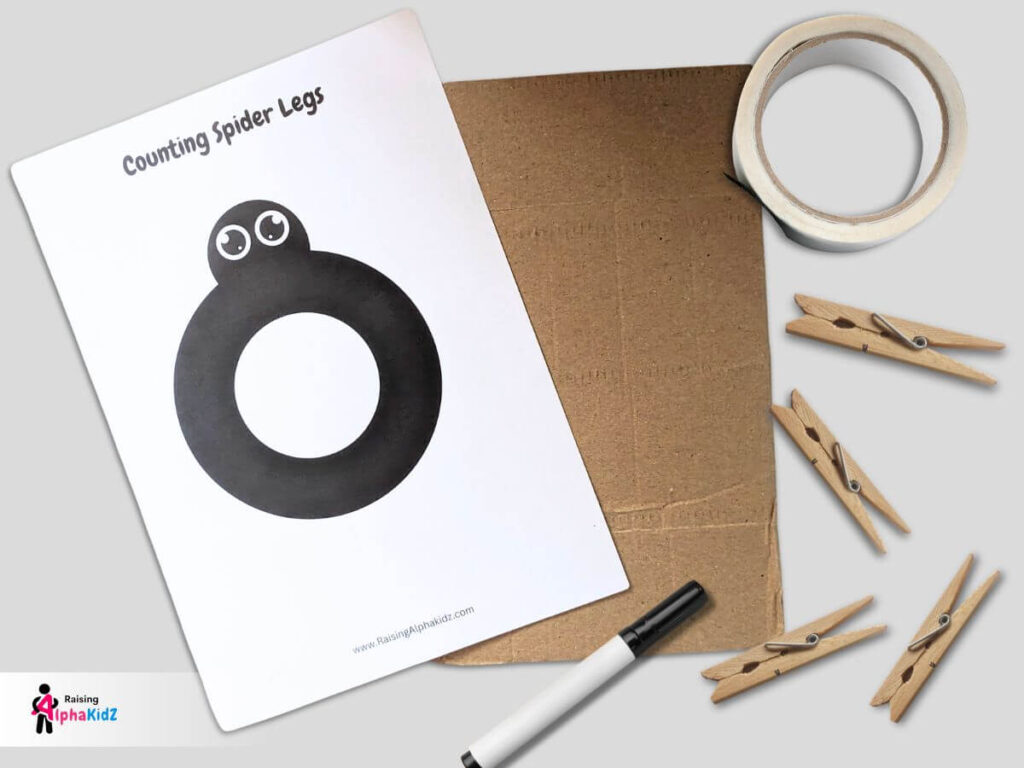
Download the Counting Spider Legs printable and print it on a sheet of paper or sticker sheet.
Step 2: Cut the cardboard
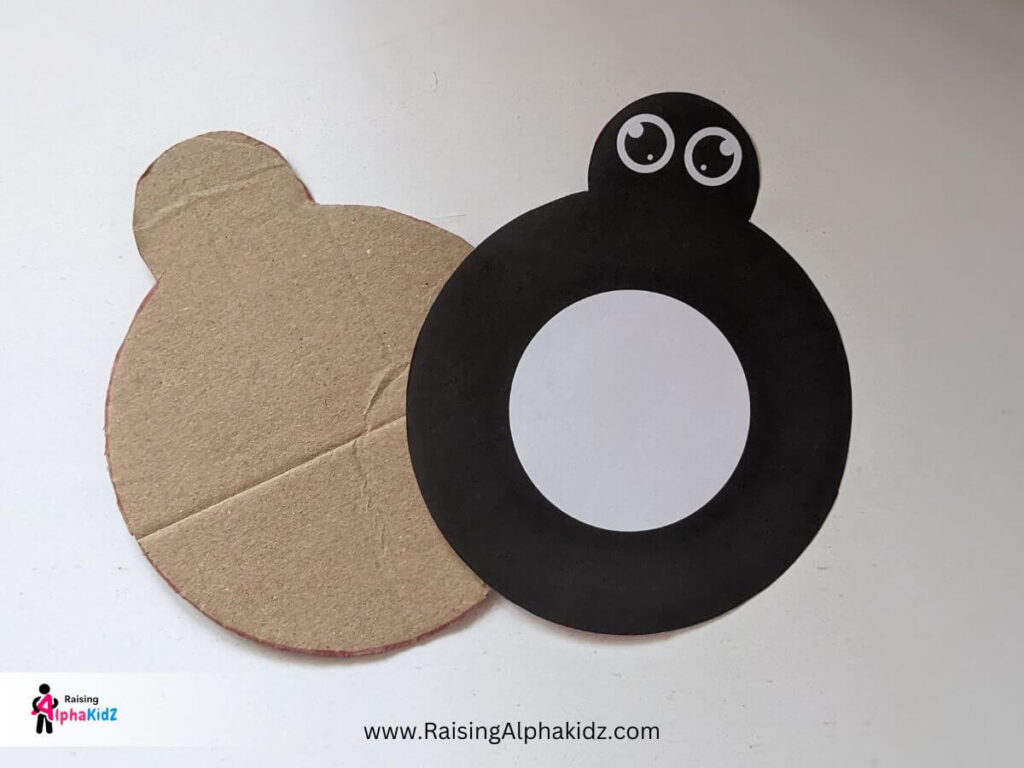
Cut out the spider from the counting spider legs printable and also cut a piece of cardboard in the same shape.
Step 3: Paste The Printable
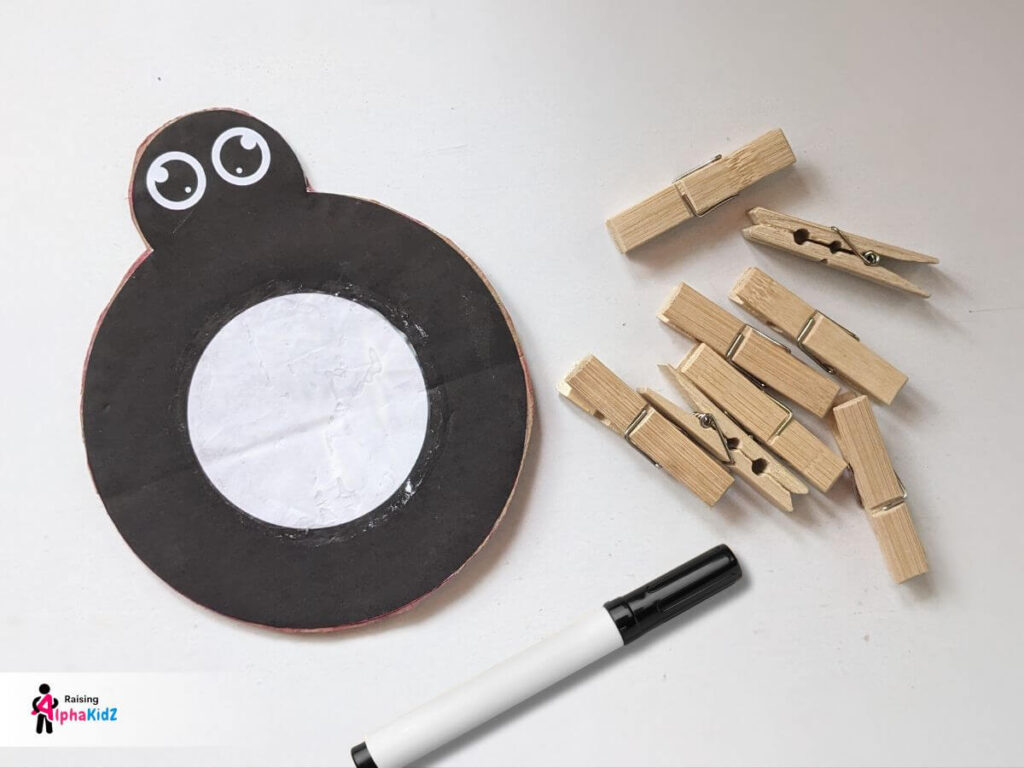
Paste the spider printable on top of the cardboard for sturdiness.
Step 4: Fix The Tape
Cover the white circle at the center of the spider with transparent tape. This makes the activity reusable so you can write and erase numbers again and again.
Step 5: Write The Number
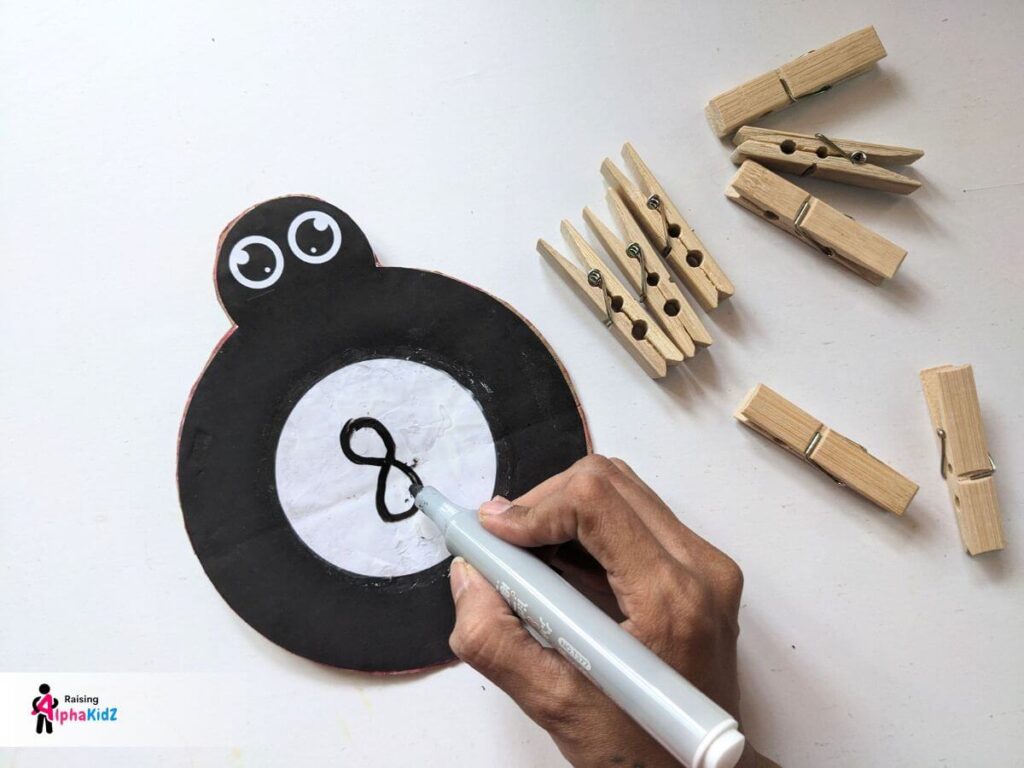
Using a write and wipe marker, write a number in the center of the spider.
Step 6: Teach The Play
Give your child clothespins (or clothes pegs). Show them how to “fix legs” to the spider.
Step 7: Read the Number and Add the Legs
Read the number on spider aloud to your child or let them try reading it themselves.
Then, count how many legs the spider needs and clip on that many clothespins.
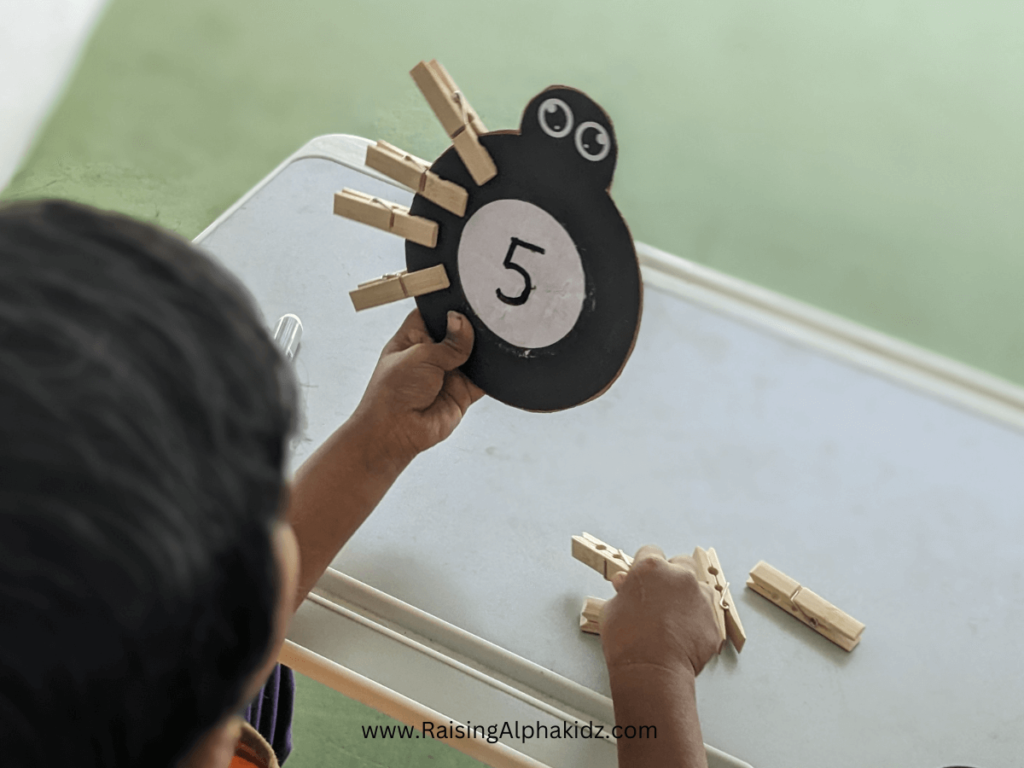
For example, if the spider shows 5, they must clip 5 legs around its body.
Step 8: Wipe And Write Next Number
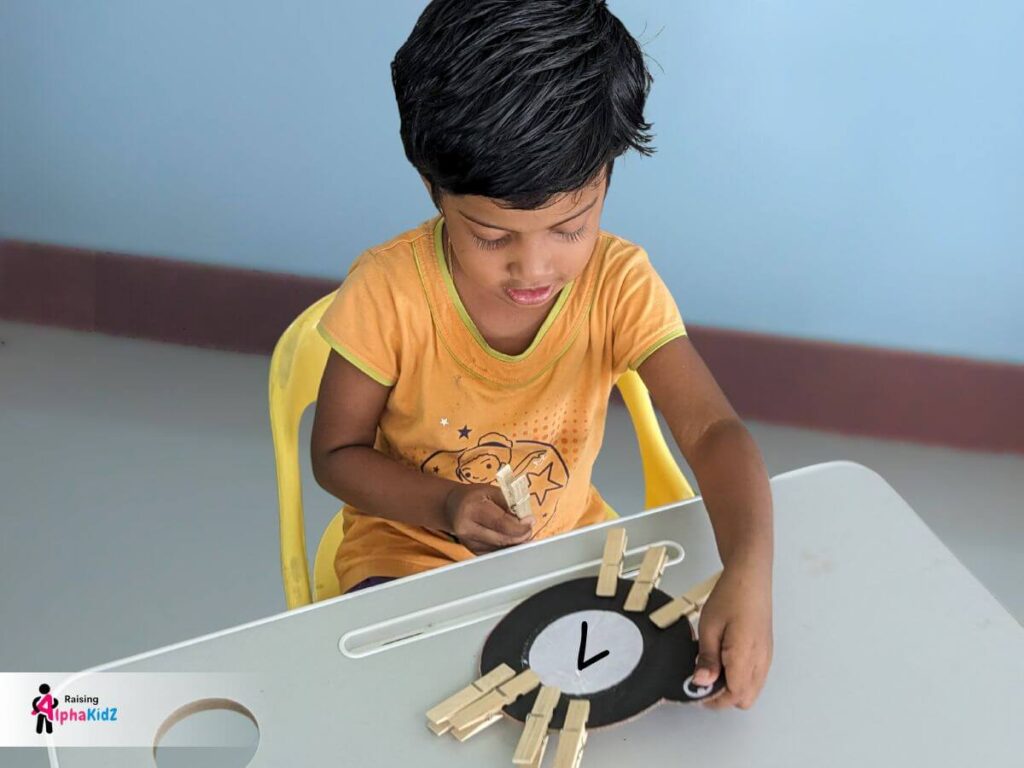
Once finished, wipe the number off with a damp sponge, erase it, and write a new number.
Step 9: Repeat And Progress
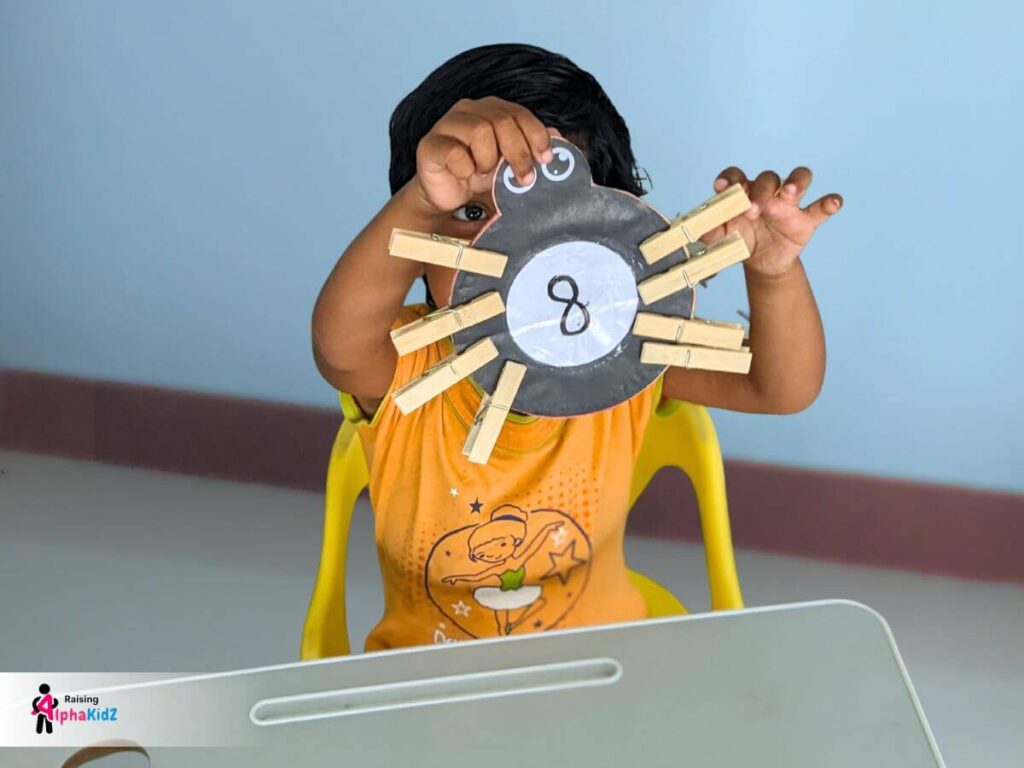
You can start small (1–5), then gradually move to higher ranges (1–10, 1–15) as your child progresses.
Repeat the activity with different numbers to keep the learning fresh and exciting.
Download Counting Spider Legs Free Printable
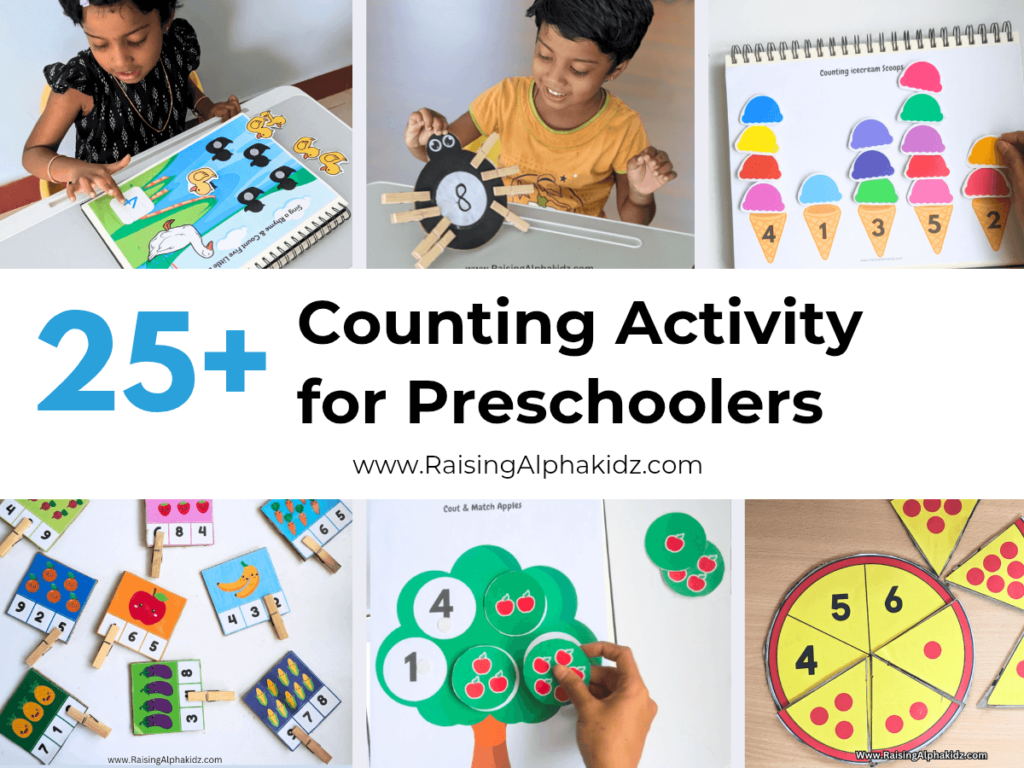
You Might Also Like: 25+ Fun Numbers Counting Activities For Preschoolers
How To Teach Addition & Subtraction with Counting Spider Leg Activity
Addition
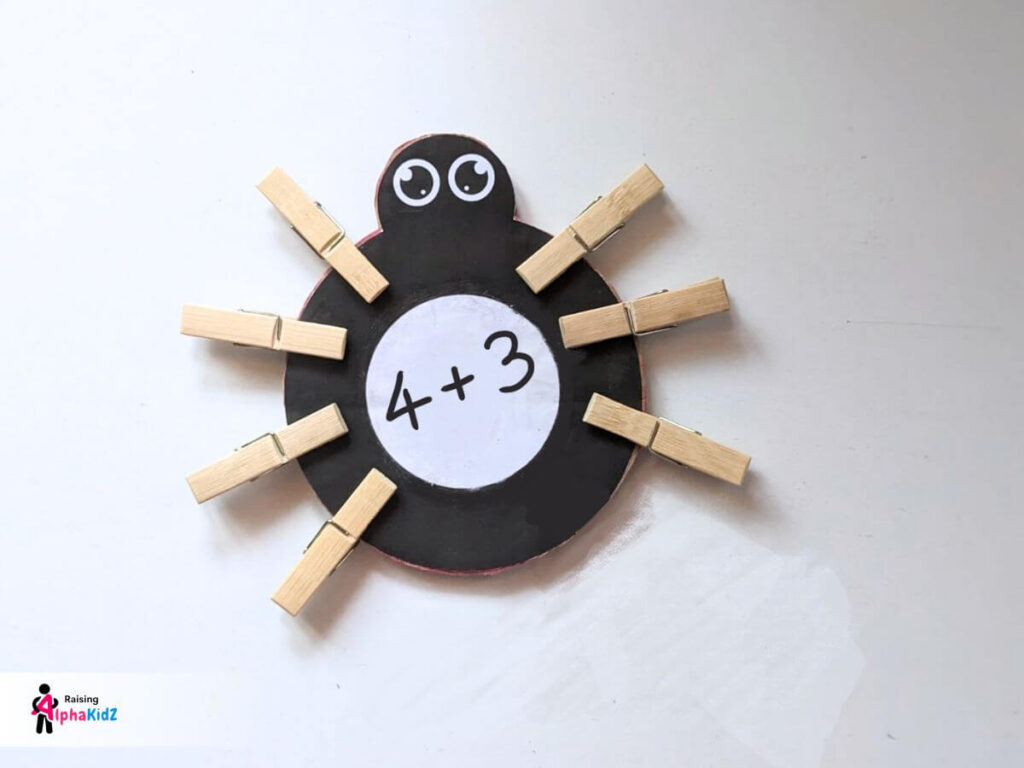
- Write an addition problem (e.g., 4 + 3) in the spider’s center.
- Ask your child to clip the first number of pegs (4) on one side of the spider.
- Then clip the second number of pegs (3) on the other side.
- Count all the pegs together—this total is the answer.

Subtraction

- Write a subtraction problem (e.g., 8 – 4) in the center.
- First, clip the total number (8) on the spider.
- Instead of adding, ask your child to remove the number being subtracted (4).
- Count the pegs that are still on the spider. That number is the answer.
- Erase and try new problems.
How to Teach Odd & Even Numbers With Counting Spider Legs Activity
Once your child gets comfortable counting the legs, you can introduce the concept of even and odd numbers.
Understanding Even and Odd Numbers
- Write a number in the center of the spider.
- Start clipping pegs one by one, alternating sides (right, left, right, left).
- Stop once the number of pegs matches the number written.
- Now ask kids to observe and tell the number is odd or even.
- If both sides have the same number of legs, the number is even. If one side has an extra leg, the number is odd.
Ask: “Which spiders have legs that can be shared equally on both sides?” → These are even numbers.
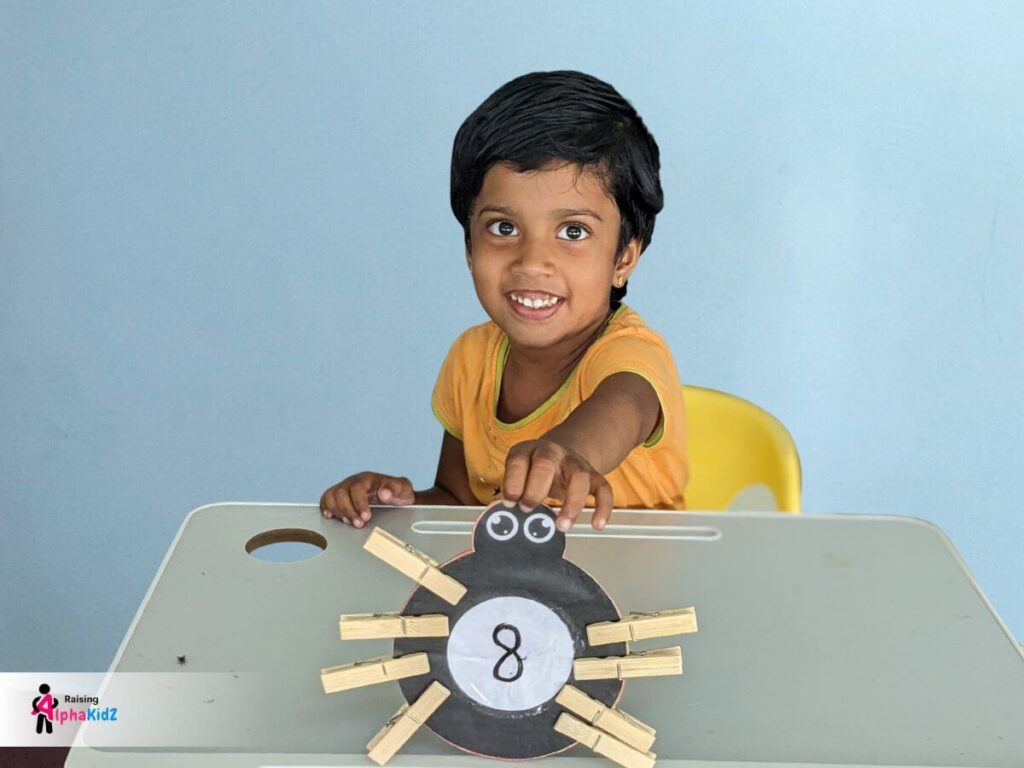
“Which spiders have one leg left over after sharing?” → Those are odd numbers.
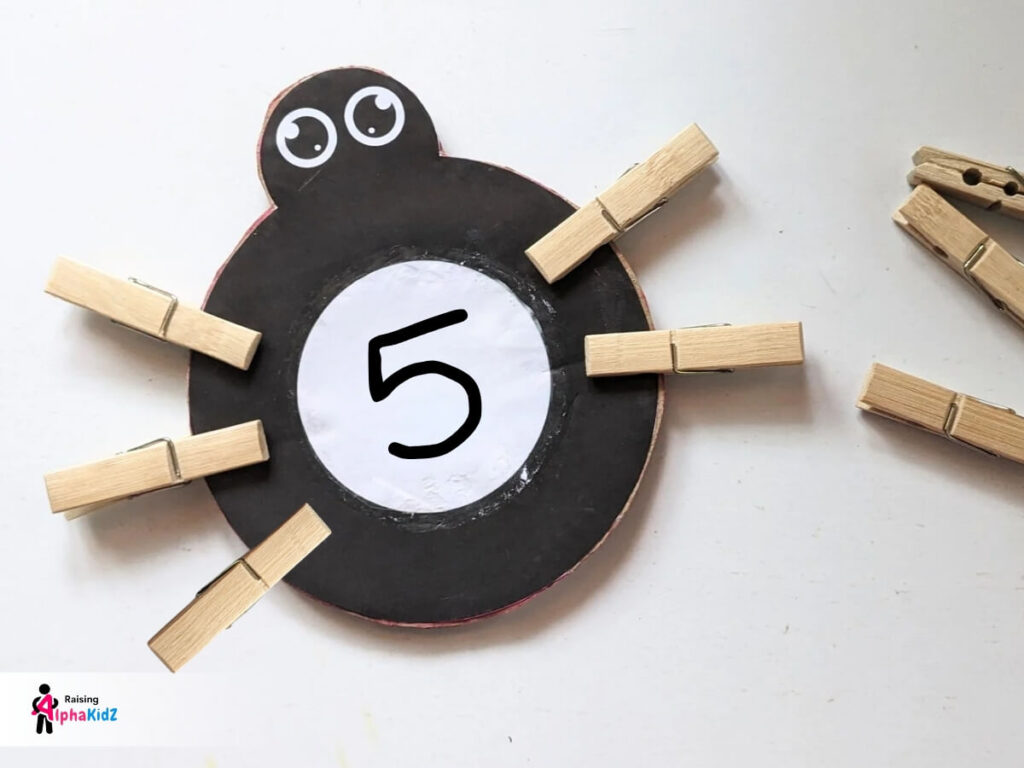
For example, if a spider has 5 legs, you can show: 2 on one side + 3 on the other = 5. This helps children see how numbers can be broken into parts. Start small with numbers under 10, then move toward bigger numbers as their confidence grows.
How To Play Find My Legs Game
Another fun variation: Offer spider bodies to kids and ask, “How many legs should spiders have?” (Answer: eight.) Each child takes turns rolling a die and adding that many legs to the spider. Keep playing until one child reaches eight legs. The child who reaches 8 legs first is considered winner. Then remove the legs and start again!
Learning Outcomes
Strengthening Fine Motor Skills
Every time a child pinches open a clothespin and attaches it to the spider, they’re not just playing—they’re building fine motor strength. This motion helps develop the pincer grasp, which is essential for writing, coloring, and even tying shoelaces later on. Encourage your preschooler to use their thumb and pointer finger, switching hands occasionally to build coordination on both sides.
early math and cognitive skills:
- Number Recognition: Kids learn to identify and associate numbers with quantities.
- Fine Motor Skills: Clipping clothespins helps strengthen little fingers and improves hand-eye coordination.
- Counting Skills: Strengthens understanding of one-to-one correspondence (each number matches one object).
- Comparision: Encourages comparing quantities (more, less, equal).
- Problem-Solving: Figuring out how many clothespins to attach encourages critical thinking.
This free printable “Counting Spider Legs” activity blends math, fine motor practice, and problem-solving in a way that’s engaging for preschoolers and adaptable for kindergartners. It starts simple and can grow with your child, making it a versatile learning tool.
Similar Counting Activities for Preschoolers
If your child enjoys this DIY counting activity, here are some other fun and educational ideas to try:
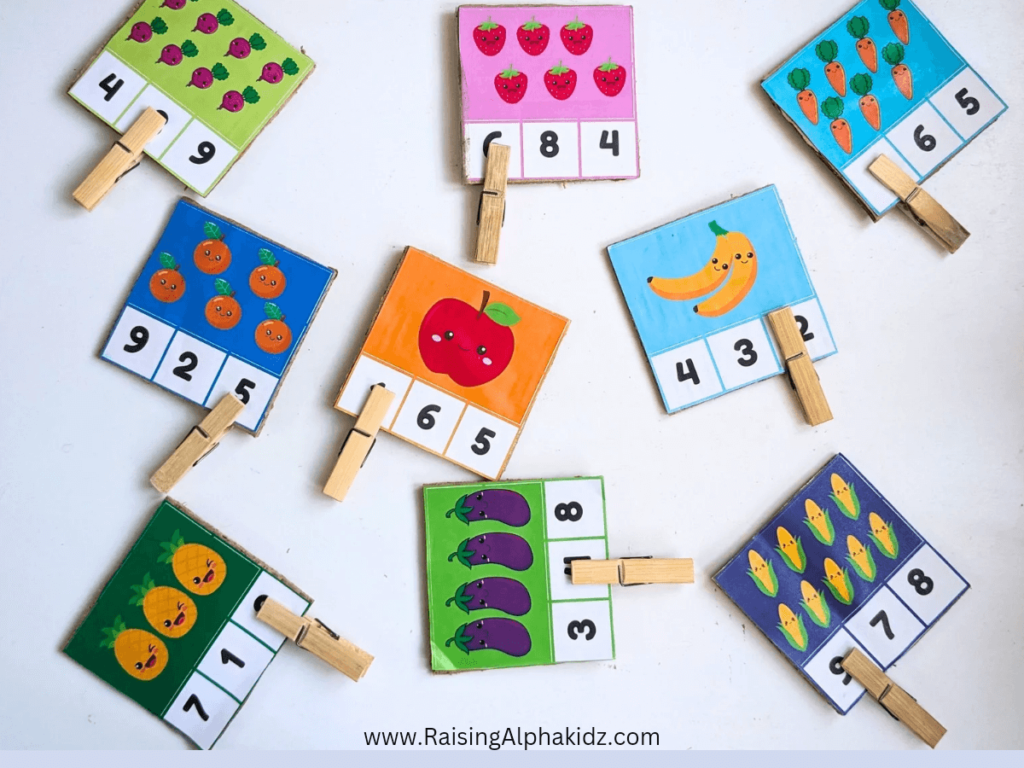
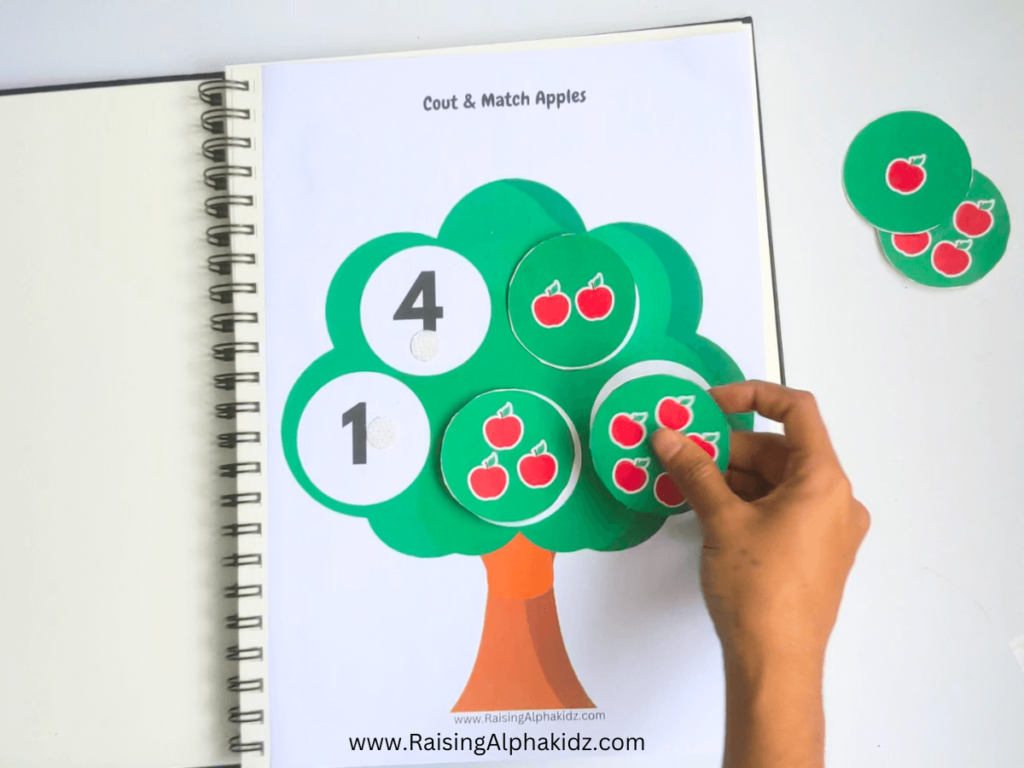
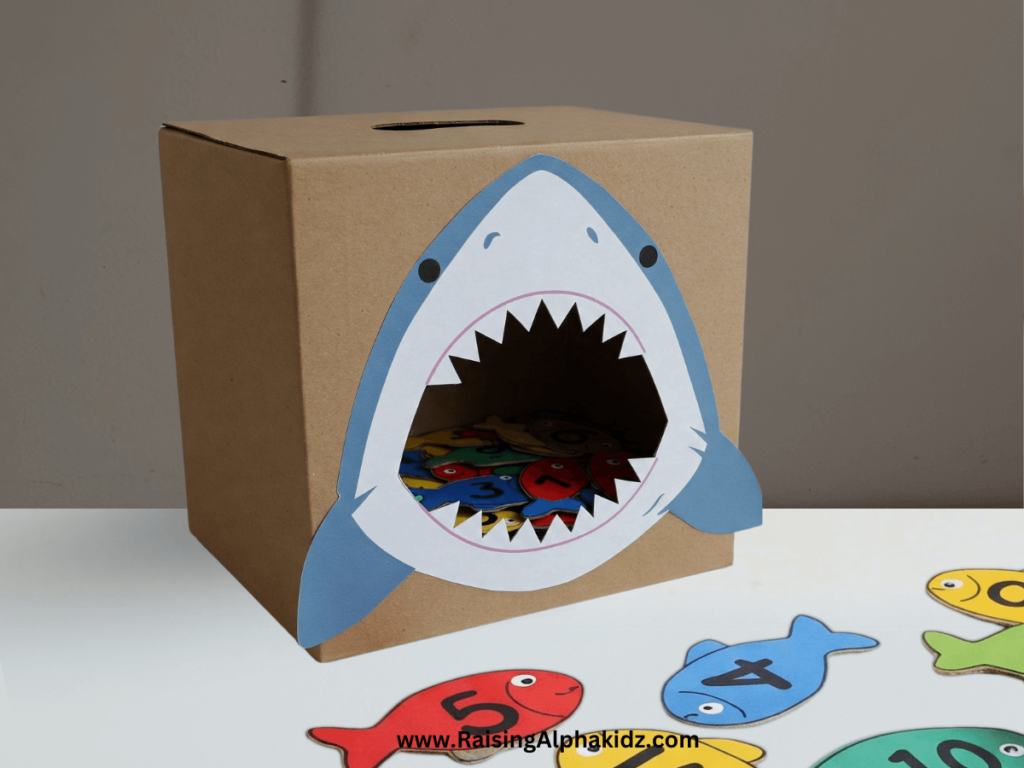
Checkout : Counting Activities Archive
This Counting Spider Legs Activity is a fantastic example of how simple materials can create meaningful learning experiences. It’s a STEM activity for kids that combines math, fine motor skills, and creativity—all while having fun!
Incorporating Halloween – Themed activities like this spider counting game into your child’s play during Halloween party is a great way to make the festive season more spooky and enjoyable.
Click here to get access to Download More Free Printable Templates !
Subscribe To Newsletter

